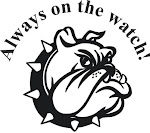CENTERVILLE - Centerville leaders are thinking about executing a U-turn on the city’s street maintenance program. One option being considered would dispense with seal coating altogether and introduce a “thin overlay” approach to extending the useful life of pavements included within the city’s 16-mile street network.
The Centerville City Council met at a special work session May 25 to discuss financial issues as they affect the preparation of the city’s 2012 budget.
Among the discussion items was a proposal by Public Works Director Paul Palzer to abandon the 25-year street replacement program contained in the city’s Pavement Management Program.
“With the current budget constraints, it is not feasible to continue this program,” Palzer’s memorandum to council stated.
Currently, the city is spending about $600,000 each year in annual debt service to fund its outstanding bond obligations, Finance Director Mike Jeziorski said. Those debt obligations include the 2004 and 2009 Street and Utility Reconstruction Projects, as well as the city’s share of the Centennial Police Department building in Circle Pines.
Fully funding the city’s Pavement Management Program alone would require an estimated annualized cost of $1.7 million, Jeziorski
A thin overlay would be applied less often—say, on a 15-year interval, or more infrequently, Palzer said.
For the city’s collector streets that carry more traffic, the thin overlay could be applied every 12 to 15 years, he said. For other streets, an interval of 17 to 18 years could be used.
“It’s twice as much as a seal coat but half as often,” said City Engineer Mark Statz at the meeting. “It’s a substitute for a seal coat program.”
“It could mean tough decisions, but tough decisions need to be made,” said Fehrenbacher.
Though cheaper, thin overlays have to be paid for, too. Short of raising the tax levy to cover the expense— Jeziorski said the tax levy would have to be increased by 10 to 12 percent to cover all costs of the thin overlay program—council members have the option of charging benefiting property owners.
“I guess I just can’t see raising the levy amount,” said Mayor Tom Wilharber.
“If my street were being improved, I would expect to pay for it,” Councilmember Ben Fehrenbacher said.
Full Story Here
Deb Barnes
The Citizen
Tuesday, June 21, 2011
Subscribe to:
Comments (Atom)





